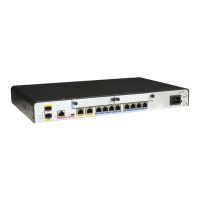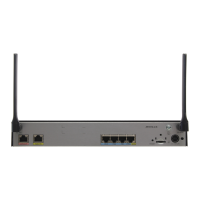l Configuring a name for the prefix list used to filter labeled BGP routes of the public network
Data Preparation
To configure inter-AS VPN-Option C, you need the following data.
No. Data
1 Data for configuring a VPN instance on a PE:
l VPN instance name
l (Optional) Description of the VPN instance
l RD, VPN target attribute of the VPN instance IPv4 address families
l (Optional) The routing policy that controls the sending and receiving of VPN
routing information
l (Optional) The maximum number of routes allowed by the VPN instance IPv4
address families
2
IP addresses of PE interfaces that access CEs
3 AS number of each AS
4 IP addresses of the interfaces between ASBRs
5 Routing policies on ASBRs
6 Route protocol between PEs and CEs
7 (Optional) The name of the IP prefix list used to filter the labeled BGP routes of
the public network
NOTE
In inter-AS VPN-Option C, do not enable LDP between ASBRs.
If LDP is enabled on the interfaces between ASBRs, LDP sessions are then established between the ASBRs.
In this case, the ASBRs establish an egress LSP and send Mapping messages to the upstream ASBR. After
receiving Mapping messages, the upstream ASBR establishes a transit LSP. When there are high-volume
BGP routes, enabling LDP on the interfaces between ASBRs leads to the occupation of a large number of
LDP labels.
3.9.2 Establishing the EBGP Peer Relationship Between ASBRs
The EBGP peer relationship is established between ASBRs to advertise routes destined for the
loopback interfaces on PEs.
Procedure
l Perform the following steps on ASBRs:
1. Run:
system-view
The system view is displayed.
2. Run:
interface interface-type interface-number
Huawei AR1200 Series Enterprise Routers
Configuration Guide - VPN 3 BGP MPLS IP VPN Configuration
Issue 01 (2012-04-20) Huawei Proprietary and Confidential
Copyright © Huawei Technologies Co., Ltd.
113

